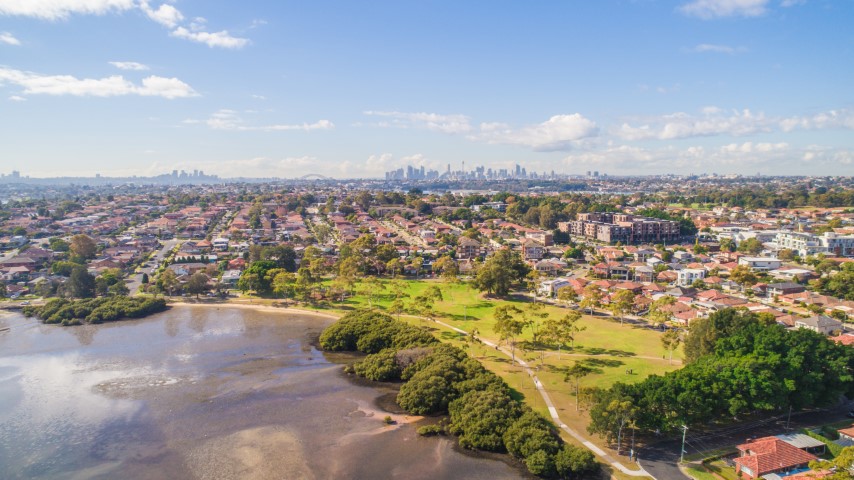Weeds
Equally as important as biodiversity is biosecurity. Biosecurity refers to the way we stop the introduction and spread of harmful organisms (including plants and animals) into our environment and how we manage the impacts of those already here. In the City of Canada Bay, these harmful organisms are mostly plants growing where they shouldn’t be, otherwise known as weeds. These weeds could be a plant native to South America or Queensland, which don't naturally belong in NSW.
The Legislation
The NSW Government introduced the Biosecurity Act 2015, replacing the Noxious Weeds Act 1993 and the former term 'noxious weed' with the new term 'priority weed'.
A priority weed is a weed that can have serious economic or environmental impacts with their priority status decided by State, Regional and Local weed management plans. In the City of Canada Bay, priority weeds are listed in the Greater Sydney Regional Strategic Weed Management Plan 2023-2027. Each listed weed includes management categories which are divided into Prevention, Eradication, Containment, and Asset Protection.
Basically, priority weeds that are already widespread such as Asparagus fern are listed under Containment and Asset Protection whereas newer priority weeds such as Coral creeper are listed under Eradication or Prevention. This makes it simpler for private landholders and councils to manage identified priority weed outbreaks.
Under the Act, all private and public landholders are given a biosecurity duty to know what the priority weeds are, what to do to limit their spread, or manage and control outbreaks. This means it is up to everyone in possession of plants to know what the priority weeds are. Find out more about common and priority weeds in Canada Bay below.
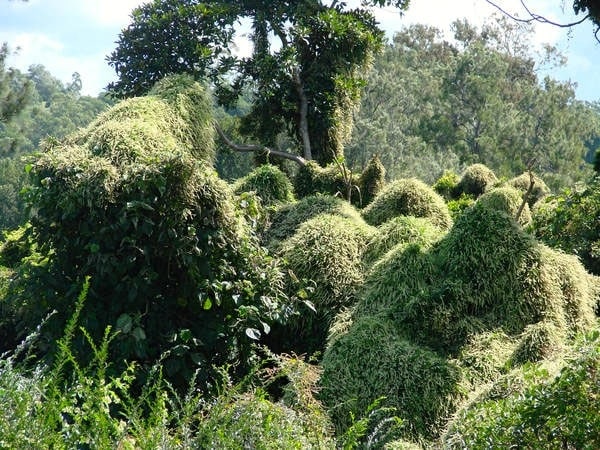
What council is doing
In the City of Canada Bay, our Bushcare volunteers and staff do much of the weed management on public land. It’s important that we collaborate with our community to report on, control and dispose of weeds on private land, too. Council rely on our community to inform us of their presence. Should a priority weed be noticed on a property not managed by council, our Sustainability team can work with the landholder to inform them of their biosecurity duty and appropriate methods to control and dispose of the weed. Occasionally, enforcement of a landholder's failure to discharge their biosecurity duty or contravention of a biosecurity direction is required under the Act.
How you can help
Aside from joining Bushcare, you can report sightings of priority weeds listed in the Greater Sydney Regional Strategic Weed Management Plan to Council's Sustainability team by calling 9911 6555 or emailing environment@canadabay.nsw.gov.au.
Listed below are some of Canada Bay's common weeds, as well as methods to control and dispose of them. If using herbicide, remember to only buy herbicide from reputable suppliers and follow all safety directions on the container, including wearing Personal Protective Equipment (PPE) such as chemical-proof gloves and a mask.
Only Priority Weeds or Weeds of National Significance (WoNS) need reporting to Council. These are weeds listed in Appendix 1 of the Greater Sydney Regional Strategic Weed Management Plan. Appendix 1 is found on page 34 of the Plan.
The drop-down list below contains common weeds found in the City of Canada Bay. Weeds which are Priority Weeds or WoNS are identified in bold.
If you sight a Priority Weed or WoNS, please do the following depending on where the weed is sighted:
- Public land (Council park or reserve): Please report the weed to Council's Environmental Officer - Natural Resources by calling 9911 6555 or emailing environment@canadabay.nsw.gov.au.
- Private land (or land not managed by Council): If it is your neighbour's property, the best method is to first discuss with your neighbour, as many landholders are simply not aware of the biosecurity or health risks of certain weeds. If the weed cannot be safely controlled following communication, please then contact Council's Environmental Officer - Natural Resources by calling 9911 6555 or emailing environment@canadabay.nsw.gov.au.
Other resources for identifying Priority Weeds include:
You can also get involved with Bushcare, where you will gain knowledge, tools and training for tackling weeds.
Lastly, keep an eye on our Whats'On page, where Council shares upcoming weeds workshops and Bushcare events.
There are many ways to remove weeds, and knowing the ideal way to remove a weed will help in preventing it returning to your garden. Our Weed Removal Factsheet outlines the many techniques available, as does the following information.
If you are using herbicide, ensure that you read and follow all safety directions on the label, including wearing appropriate PPE such as chemical-proof gloves, eye protection and a mask, if required. Herbicide is most effective when applied early in the morning or late in the afternoon and must not be applied if rain is predicted within four hours.
- Hand Pulling — best for small weeds with shallow root systems and weed grasses.
Tools: Knife or hand trowel.
Method: Cut around roots with tool if needed, then grasp the plant low to the ground and pull, gently at first.
- Crowning — best for small weed seedlings with a thick root ball.
Tools: Knife
Method: Insert the knife into the ground below the stem, then cut around the root ball. Gently remove the remaining weed from the ground by hand.
- Cut and Paint — best for woody weeds with long taproots including trees and shrubs.
Tools: Secateurs or loppers
Method: Cut horizontally through the stem or stump. Apply an appropriate herbicide within 30 seconds of cutting, before the cells can close up. Apply herbicide primarily to the greener edges of the stump, as this is where most of the cells are located which will transport the herbicide to the root system.
- Stem Scraping/Scrape and Paint — best for vines or woody weeds with curved root systems, such as Ochna and Cestrum.
Tools: Knife, herbicide, bottle with narrow opening to apply herbicide.
Method: Scrape away a 10cm strip of bark to expose the green stem underneath. Apply an appropriate herbicide within 30 seconds.
- Drilling/Stem Injection — best for large woody weed trees known to regrow after cutting down, such as Camphor Laurel.
Tools: Drill with wood-bit, syringe, herbicide, PPE.
Method: Drill holes around the base of the weed about 5cm apart. The holes need to be deep enough to penetrate the green, moist layer underneath the bark, but not too deep, otherwise the herbicide will only reach dead wood. Inject a small amount of herbicide into each hole within 30 seconds of drilling.
- Spraying — best for patches of grasses and low-growing herb weeds. Do not attempt spraying herbicide if rain is predicted within four hours or if it is windy.
Tools: Spray bottle, PPE including face mask and chemical-proof gloves. Small spray bottles can be purchased from hardware shops.
Method: Spray plants at as close range as is possible. Spraying is best carried out on a warm still day, early in the morning or late in the afternoon.
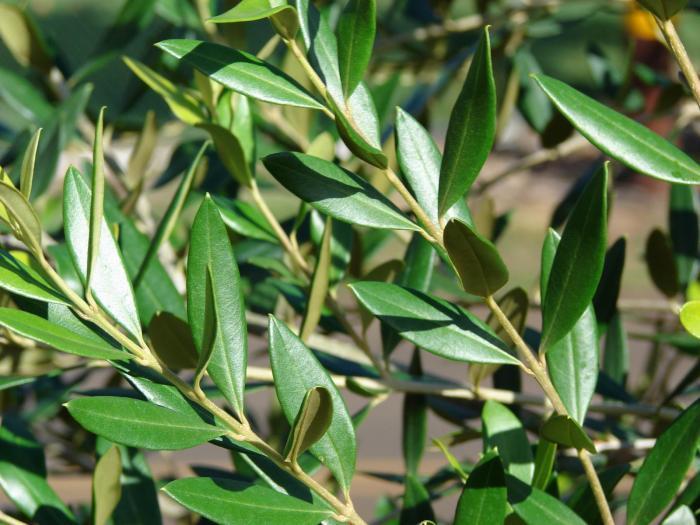
Image: © Forest & Kim Starr
| Description | Control Method |
|
Evergreen shrubby tree growing to 5-10m tall. Has darker green leaves than European Olive, but can still be mistakenly planted. Priority weed: Containment in Greater Sydney |
Smaller trees (up to 10cm in diameter) can be cut down and the stump treated with herbicide immediately. Larger trees require stem injection using a drill and herbicide. Once the leaves have fallen off, the tree can then be cut down and the stump removed. |
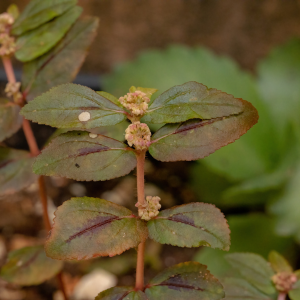
| Description | Control Method |
| Asthma Weed is very sticky, with reddish stems and hairy leaves. It often grows out of brickwork and beside houses. The hairs on Asthma Weed irritate skin and may cause breathing trouble for asthmatic people. | Wear gloves and a mask. Smaller plants can be pulled our dug out and left to dry in the sun. Larger areas should be sprayed with herbicide and the area monitored for months to treat any regrowth. |
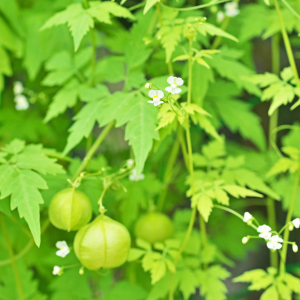
| Description | Control Method |
| A smothering vine which carpets ground and climbs trees, covering entire areas and killing other vegetation. It has bright green leaves and balloon-like, papery seed pods. |
Attempt control when balloon seed pods are green or not present. Smaller seedlings can be easily pulled out by hand. Mature vines can be cut from where they grow, with the aerial parts left to die and the ground parts controlled by pulling out or spraying with herbicide. Stems can also be scraped and 'painted' with herbicide. |
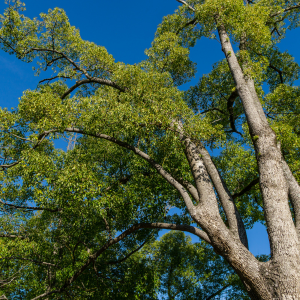
| Description | Control Method |
| Weed tree with distinctive camphor smell, mottled bark and light green leaves. The trees can grow very large and live up to 500 years. Older trees are sometimes heritage items and can contribute to our urban canopy, so it's important to check with council before removing a mature specimen. |
All parts of the plant are mildly toxic so gloves must be worn. Smaller trees (up to 10cm in diameter) can be lopped and the stumps treated with chemical. Larger trees require stem injection using a drill and herbicide. Once the leaves have fallen off, the tree can then be cut down and the stump ground and removed. |
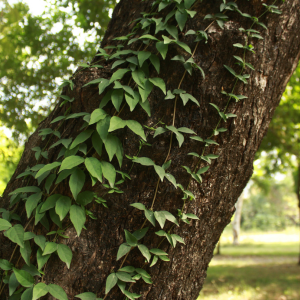
| Description | Control Method |
|
A many-stemmed, woody vine with sharp claws which dig into trees and artificial structures, eventually killing the tree or bringing down the structure. It has dark green leaves with prominent veins, often growing in pairs, yellow trumpet-shaped flowers and the distinctive claws on the stems. Weed of National Significance and a Priority Weed in Greater Sydney |
Herbicide is usually necessary. Consult Council's Sustainability team for advice and assistance if this weed is present on your property. Cut all climbing stems well above the ground (1–2m high) and leave the aerial parts to die. Peel the lower stems off the host, cut again as close to the ground as possible and paint the cut surface immediately with a glyphosate herbicide. Chemical control should be done in spring to autumn while this plant is actively growing. Follow up is essential as stems and tubers may re-sprout. |
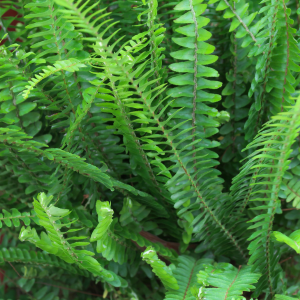
| Description | Control Method |
| Fishbone fern is native to northern Queensland but is an aggressive weed in Sydney. It outcompetes native plants and is difficult to remove. | Small numbers of ferns can be hand pulled with all plant parts removed. Larger infestations require digging out or repeated spraying with herbicide. |
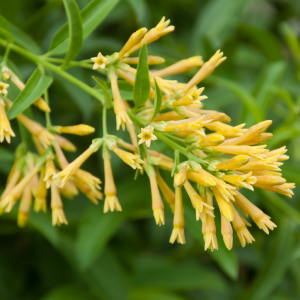
| Description | Control Method |
| A 2-3m tall shrub sometimes grown as a hedge. It has bright red flowers with black berries and dark green leaves with wavy edges. | Do not try to pull plants unless they are very small and growing in loose soil. Generally, scraping and 'painting' the green stem with herbicide works best. Scrape the stem gently to expose the green layer under the bark. Start at the base of the plant and scrape as high as possible. Apply herbicide within 15 seconds of scraping. |
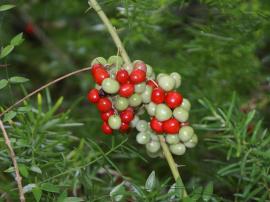
| Description | Control Method |
|
A sprawling low-growing shrub with long, prickly stems, sometimes grown in baskets or gardens where it can easily escape, or the berries eaten by birds and spread into bushland. Weed of National Significance |
Wear gloves due to the spiky leaves. Can be controlled by removing all berries and woody stems and underground root-parts. There is no need to remove or dispose of the leaves or underground tubers. |
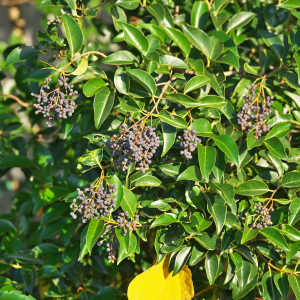
| Description | Control Method |
| Dense, evergreen shrubs to large trees with masses of black berries spread by birds, possums and flying-foxes. Privet grows quickly and forms dense stands outcompeting and shading out all other plants. | Small to medium privet can be pulled out by hand. Larger plants need to be cut down and the stump painted with herbicide immediately. If the privet is a heritage hedge, it can be regularly pruned so that seeds do not form. |
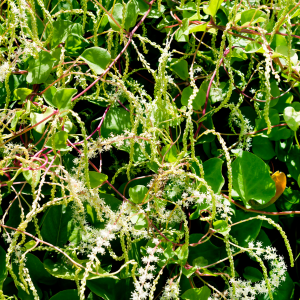
| Description | Control Method |
|
Madeira Vine has glossy, dark green leaves with aerial tubers resembling ginger. All parts of the plant can easily break off and form new vines which strangle all plants. Weed of National Significance and Priority Weed in NSW |
Take care to not let parts break off. Placing a tarpaulin or white material below the plant can help to view and catch plant parts. Carefully remove all aerial parts and dig our underground tubers with a knife or narrow trowel. Stems can also be scraped and 'painted' with herbicide, or the end of the cut vine placed in a container of full-strength herbicide to absorb and displace the herbicide throughout the plant. |
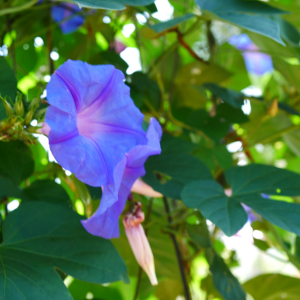
| Description | Control |
| A smothering vine with purple or pink flowers which carpets ground and climbs trees, covering entire areas and killing other vegetation. It is toxic to humans and may be toxic to some animals. | Cut climbing vines and leave aerial parts to die off. Carefully dig out all ground parts, including roots. Leaves can be sprayed with herbicide, or stems scraped and 'painted' with herbicide. |
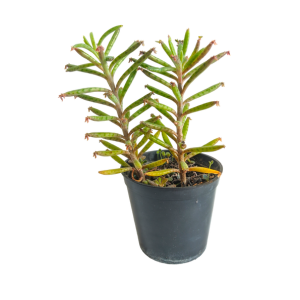
| Description | Control Method |
|
Mother-of-millions is a rapidly reproducing succulent growing between 30cm and 1m in height. It has narrow, pencil-shaped leaves brown-green in colour, with small nodes on each leaf which can break off and form new plants. It produces masses of orange-red flowers between May and October. |
Each part of the plant can grow a new plant if broken off and touching the soil. As such, control should be carefully done by hand. Firstly, place a white bag underneath the affected area, then carefully pull up each plant and place in a black plastic bag. Transfer all plant parts into the black plastic bag and leave in the sun for several weeks to ensure the weed is decomposed. Following this, dispose of the bag in council's red-lidded bin. Note that herbicide is ineffective to control Mothers-of-millions and follow up of the affected area will be required. Attempting control in winter months while the plant is in flower is recommended. |
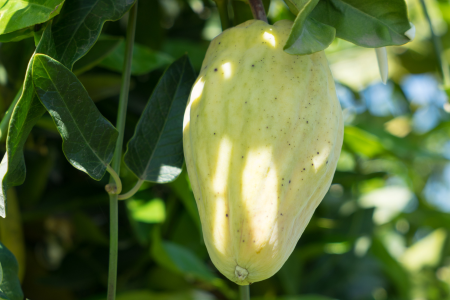
| Description | Control Method |
| Fast growing vine with hairy stems and large fruits resembling chokos, containing many seeds. The vine smothers other plants and is poisonous to people and animals. |
Wear gloves to prevent the milky sap sticking. It is usually practical to hand pull rooting parts of the vine, taking care to remove and dispose of all seed pods. Stems can also be scraped and 'painted' with herbicide. |
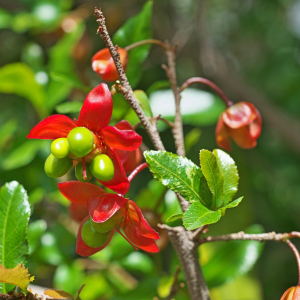
| Description | Control Method |
| A 2-3m tall shrub sometimes grown as a hedge. It has bright red flowers with black berries and dark green leaves with wavy edges. | Do not try to pull plants unless they are very small and growing in loose soil. Generally, scraping and 'painting' the green stem with herbicide works best. Scrape the stem gently to expose the green layer under the bark. Start at the base of the plant and scrape as high as possible. Apply herbicide within 15 seconds of scraping. |
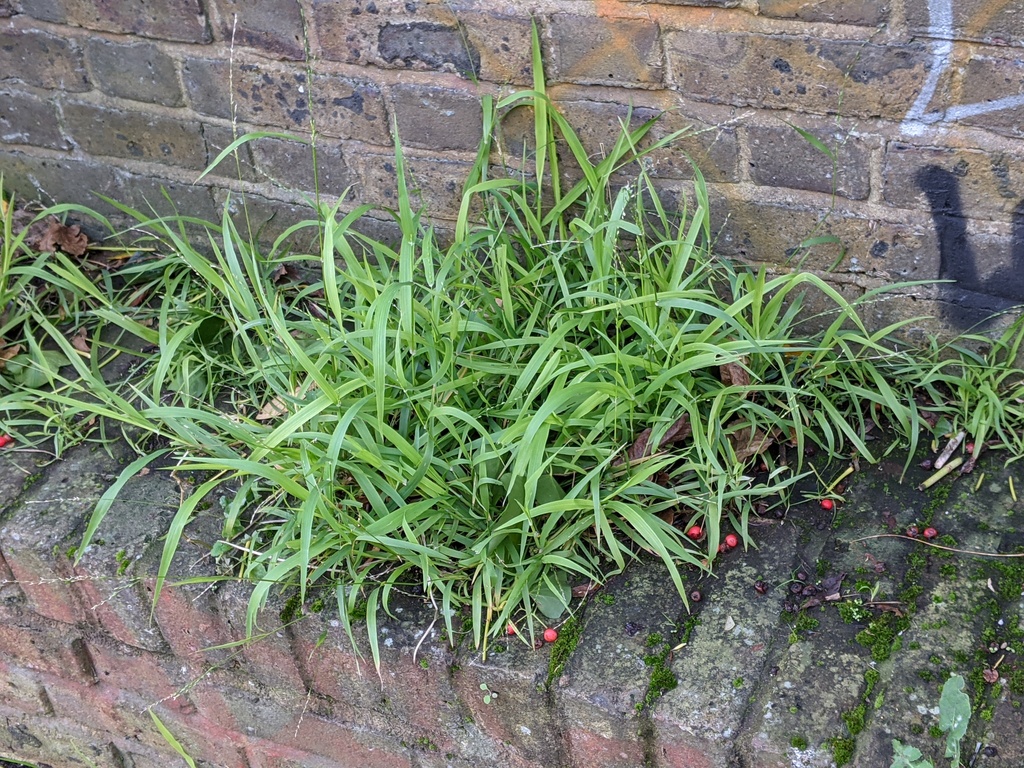
Image: (c) Piermario Maculan
| Description | Control Method |
| Bright green grass with white seeds resembling rice bubbles. It spreads easily and outcompetes native grasses in almost all soils | Hand pull/dig, bag all seed heads. |
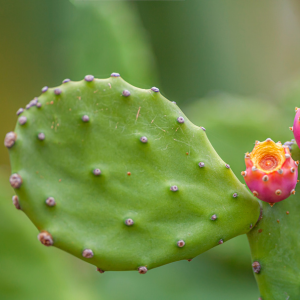
| Description | Control Method |
|
A cactus up to 2m tall with yellow flowers and purplish red fruit. Opuntia is historically one of Australia's worst weeds and remains a Weed of National Significance. Infestations covered Queensland in the early 20th century and required release of a moth (biological control) to manage.
|
Must be dug up using a mattock or other tools. Wear appropriate protective clothing and gloves to protect against injuries from spines or bristles. Areas require follow up, with smaller plants needing to again be dug up or covered with herbicide. To dispose, either bury at least 1m deep or contact Council for other disposal options. |
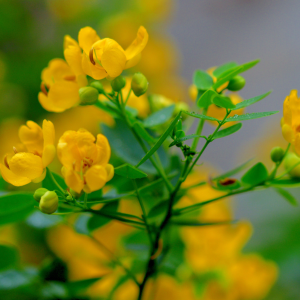
| Description | Control Method |
|
An invasive shrub with golden yellow flowers and dark green, oval leaves. It often grows amongst other vegetation in shaded gardens and can get out of control very rapidly. |
Smaller plants can be pulled out, being careful not to snap the roots. Larger shrubs need to be dug out using a mattock or spade. Stems can also be cut or scraped, then 'painted' with herbicide. |
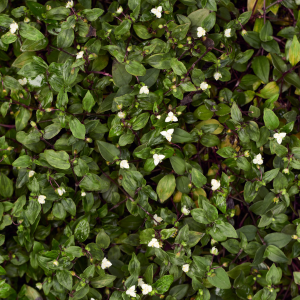
| Description | Control Method |
|
Known by many common names, Trad is an aggressive weed which overtakes and completely carpets areas of moist soil. It has small, white flowers and can be confused with the native Commelina which has blue flowers. |
Very small infestations can be pulled out by hand but every single stem node must be removed. Larger infestations can be raked first and then followed up by hand weeding. Plants can be composted under black plastic in full sun. Trad is also vulnerable to spraying with most herbicides, however follow-up is always needed. |
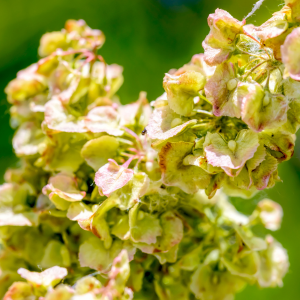
| Description | Control Method |
|
A climbing vine with arrow-shaped leaves and masses of papery fruits and flowers. It smothers other plants and carpets disturbed ground. |
Removal is best when flowers are green or absent. Carefully prune and remove papery flowers. Stems must be dug with a trowel or knife to remove the underground tubers. Stems can also be scraped and 'painted' with herbicide. |

